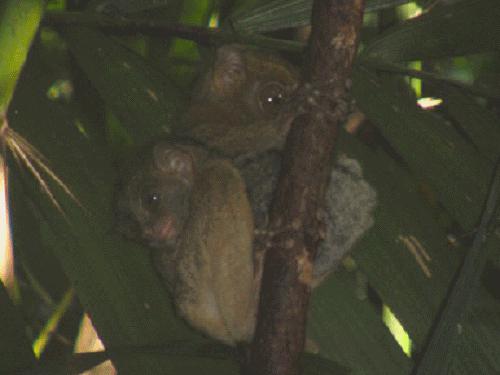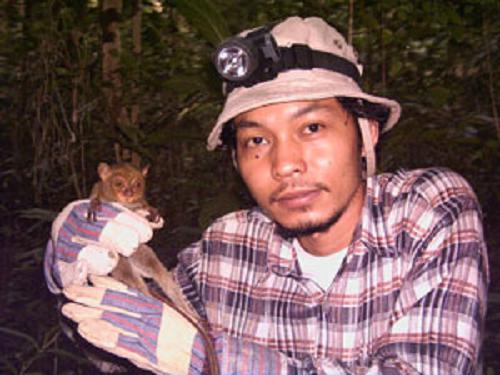Indra Yustian
Other projects
7 Jun 2010
Ex Situ Conservation of Tarsius bancanus saltator on Belitung Island, Indonesia: A Pilot Project Near their Natural Habitat
This project will study the population density and home range size of the rare nocturnal primate Tarsius bancanus saltator and identify critical resources for tarsiers' survival and adaptation in Belitung Island.

An adult female with her offspring at their sleeping site.
Among four subspecies of Western tarsiers, Tarsius bancanus saltator Elliot 1910 is restricted to the island of Belitung, Indonesia. The land surface was originally tropical forest, but since the development of palm oil industry in 1992 more than 40% of the land surface are palm oil plantation. Tin mining and large scaled oil palm plantations directly or indirectly affect the natural habitats in Belitung Island. There is a permanent threat to the flora and fauna in the island, in fact there is no terrestrial conservation area on Belitung. Still, the IUCN red data book (Eudey et al. 2000) has classified the endemic Belitung Island tarsier under the data deficient (DD) category. Basic information is still needed for the conservation efforts of this small endemic nocturnal primate.

Tarsiers receive little conservation attention in its geographic range, Indonesia and Philippine. This lack of attention is probably because tarsiers are uncommon, elusive, rarely seen (because of their nocturnal habit), and competes for conservation attention of well-known flagship species, e.g.: Sumatran rhinoceros (Dicerorhinus sumatrensis), tigers (Panthera tigris), and orangutans (Pongo pygmaeus).
The continuing deterioration of the forest-land in Belitung Island means that there is a high probability of the species becoming more threatened. A major goal in the conservation of a potentially endangered species, i.e the Belitung’s tarsier, is the estimation of its population density and home range size. Therefore, as part of the larger study of the ecology and the conservation status of T. b. saltator, we propose to study the population density and home range size of T.b. saltator in a habitat type: forest patch surrounded completely by palm oil plantation, on Belitung Island, Indonesia. This will be accomplished by studying animal densities, estimate the home range size, as well as food abundance and substrates for movements of the tarsiers.
The study will identify critical resources for tarsiers' survival and adaptation in Belitung Island. Results of the study will provide information to improve conservation, wildlife management, forestry practices, and ecotourisms in the range where tarsiers exist, more specific in Belitung Island itself. Some preliminary results from the 1st and 2nd phase of fieldwork of the larger study, which is actually my PhD work, about the ecology and the conservation status of T.b saltator, uphold part of the reasons to do this project.
The goals of this project are:
1. to provide an estimate of the population density of T. b. saltator on Belitung Island.
2. to provide preliminary home range estimates
3. to discuss the implications of this new information in terms of the conservation status of the Belitung’s tarsier.
4. to closely work together with and inform the local community and arise the public awareness; this will be accomplished by making leaflets, T-shirts, and conduct presentation and showing a self-made film/video.